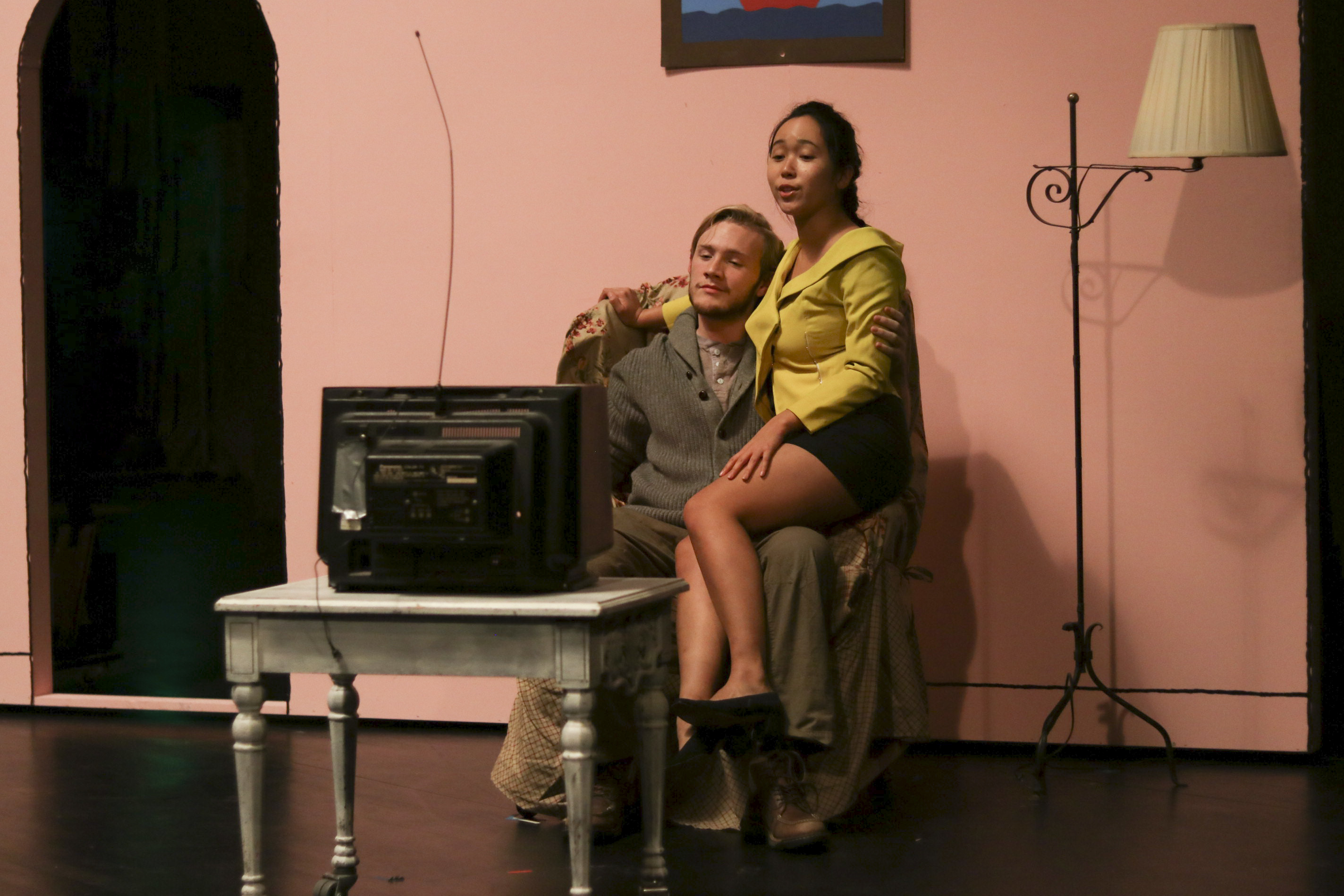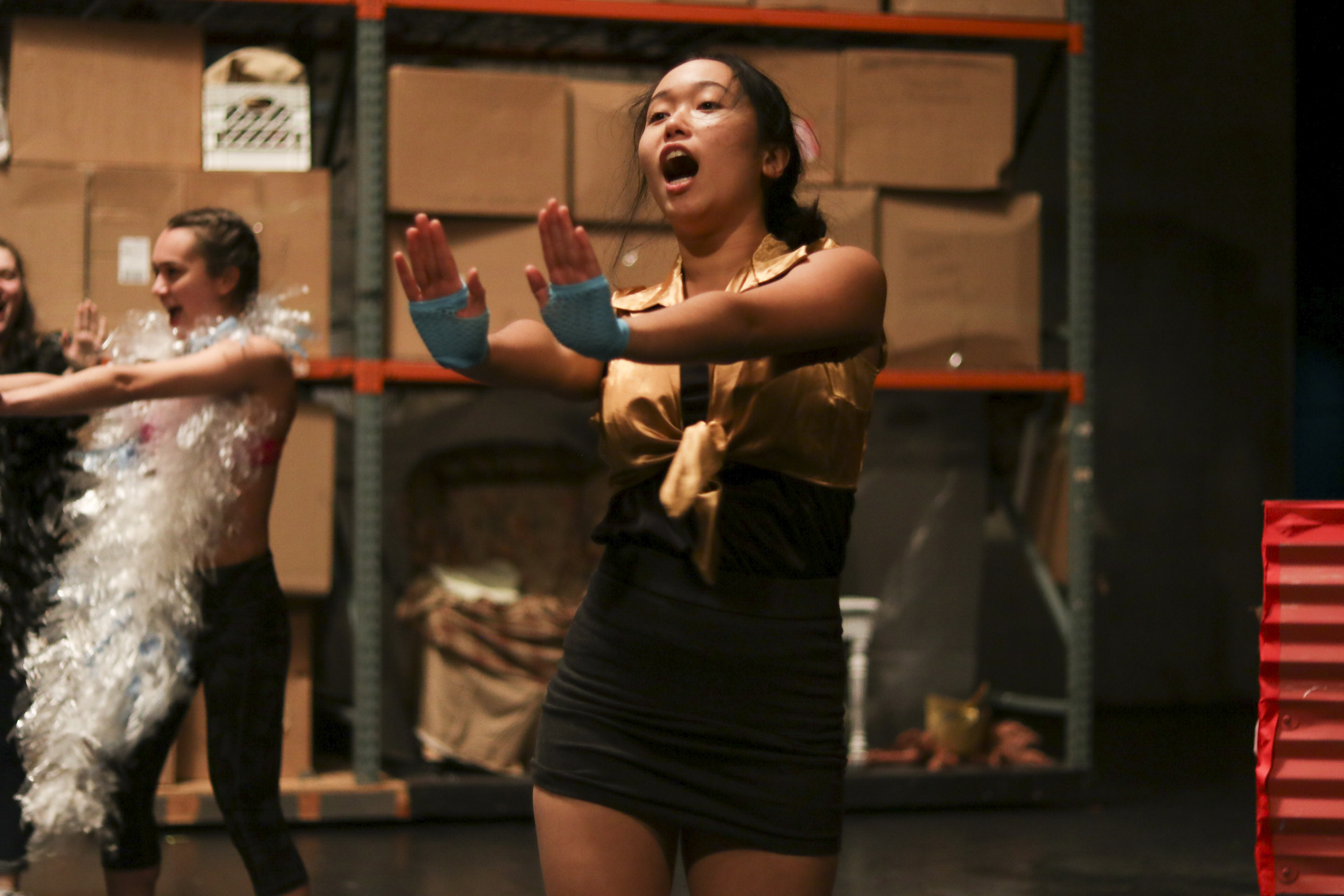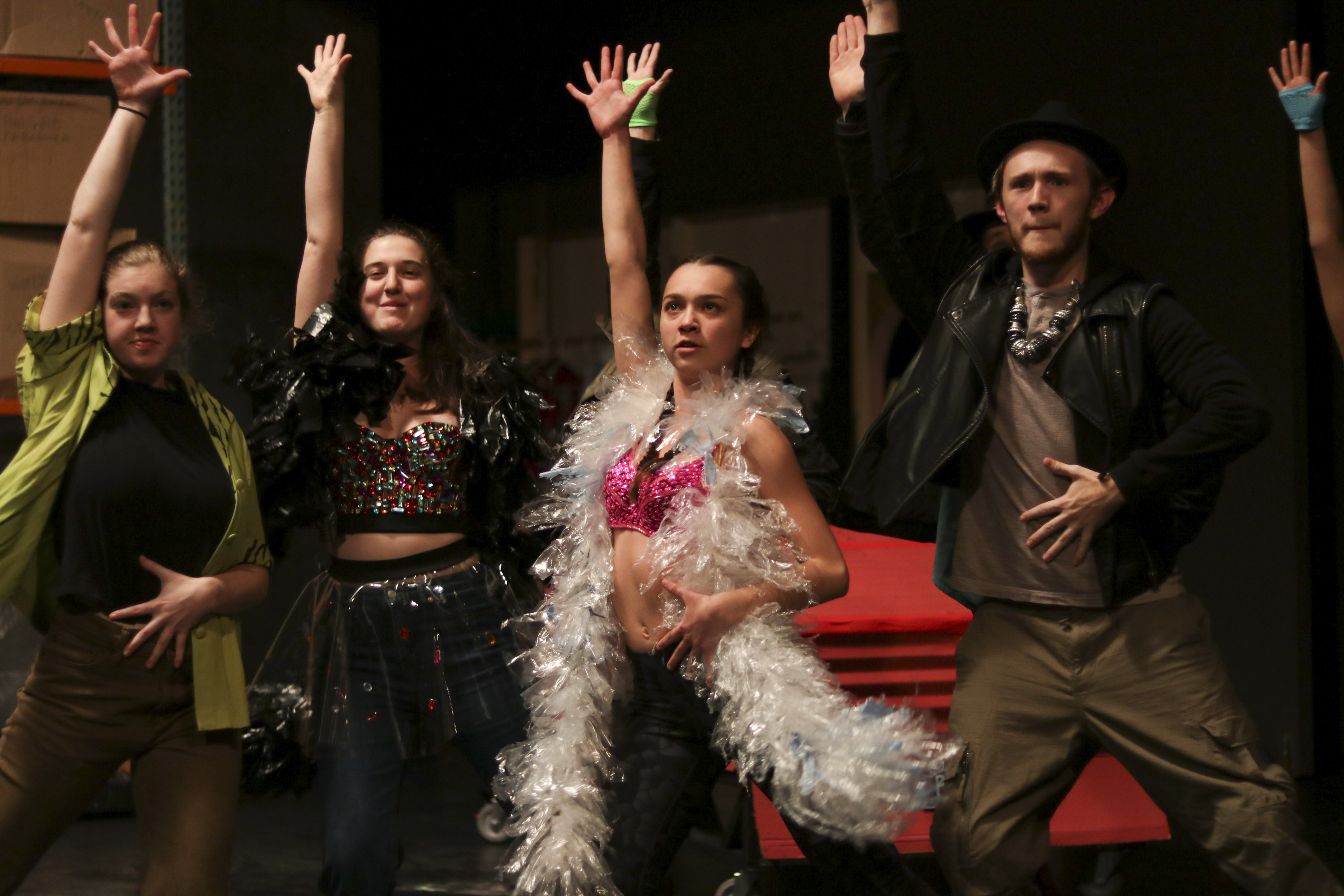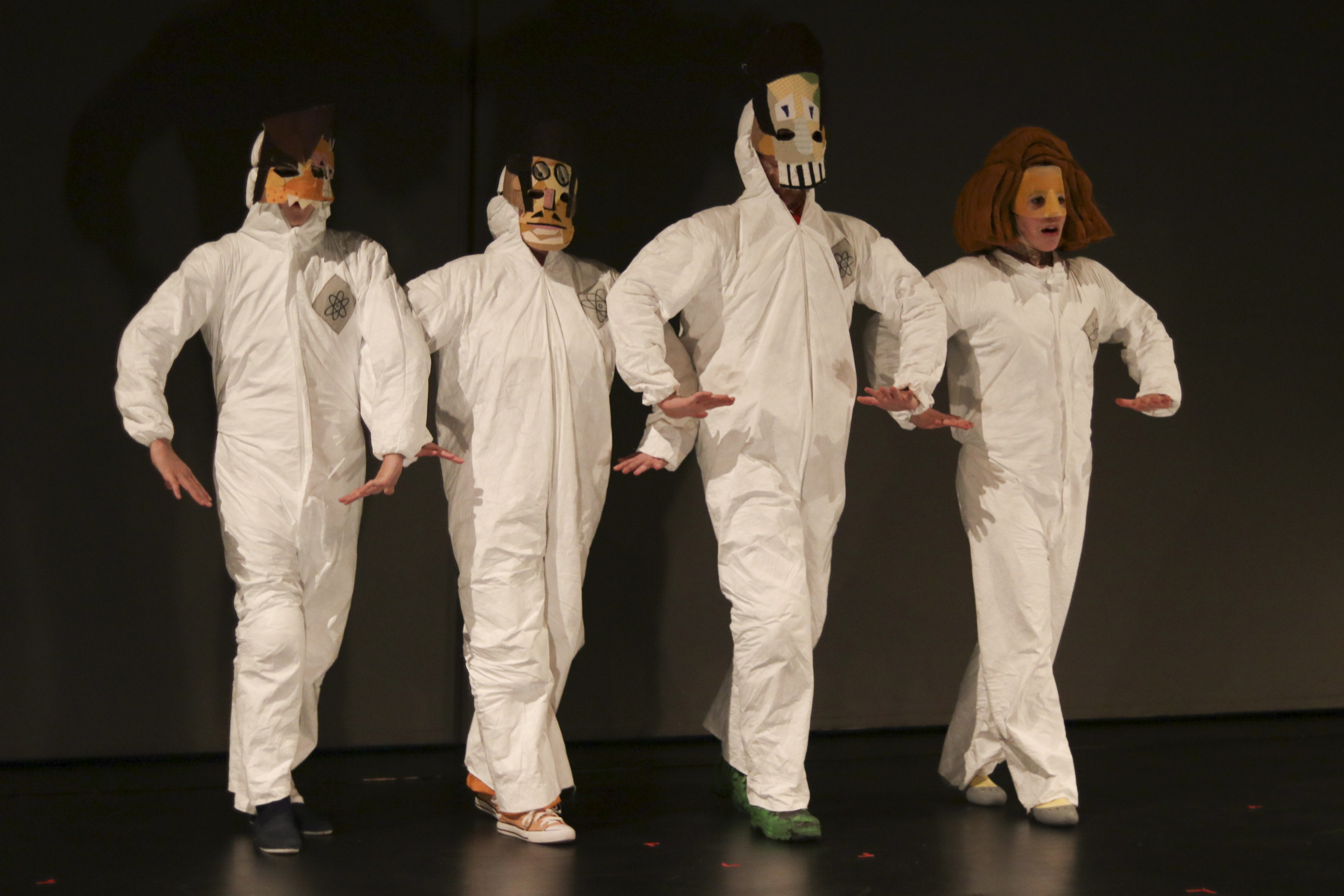
William Halliday, Photo Editor
Despite being fairly well-acquainted with both musical theater and “The Simpsons,” I was completely unprepared for this University Theater Department fever dream. “Mr. Burns, a post-electric play”, an American dark comedy play written by Anne Washburn, went up in the CFA theater the weekend of Nov. 16 for four sold-out performances. The story, told through three different narrative frameworks chock-full of pop culture references, explores the relationship between imagination and survival as characters struggle to cope with the effects of nuclear destruction through the power of storytelling.
Act One takes place “in the very near future,” as a group of people who have survived the nuclear apocalypse gather around a trashcan bonfire and attempt to reconstruct the second episode of season five of “The Simpsons,” “Cape Feare,” from memory. The audience is seated on the floor, close enough to the cast to feel as if they are part of the scene. While the characters reenact the comical scenes—Homer revealing his “Wide Load” ass tat, Moe releasing the pandas he’s been smuggling—they gradually reveal context about how they arrived in their current situation. Nuclear fallout from plants across the country has rendered cities uninhabitable, and they are left unsure of who among their loved ones have survived. In a country where there are 61 commercially operating nuclear power plants with 99 nuclear reactors across 30 different states, this post-apocalyptic future is more of a reflection of stark reality than it is an imagined possibility.
For Act Two, which follows the same characters seven years later as they rehearse for a theatrical performance of the “Cape Feare” episode, a curtain flies up and the audience moves to a different part of the stage to sit on risers, separating them from the cast. It’s hard to pull off the play-within-a-play device without looking cheesy, but the cast makes it work with discernible shifts between their “onstage” and “backstage” personas. The highlight of Act Two is a “chart hits” interlude in which all of the characters come on stage sporting sparkly, flashy costumes and perform a mash-up of songs that you definitely played at your Bar Mitzvah (Britney Spears’ “Toxic”, Eminem’s “Lose Yourself”, you know the drill). The singing is outstanding; the dance sequences, choreographed by Julie Mulvihill and Shana Laski ’19, are commendable, and viewers are reminded of why these songs have become the backbone of American culture. It’s a scene I imagine the stereotypical theater kid fantasizes about performing in, and while part of me wants to hate the extravaganza, but another part of me can’t help but enjoy. It’s Terp weekend, after all.

William Halliday, Photo Editor
After a brief intermission, the audience returns to the theater for the third and final act and finds new seats in the house, introducing a new degree of separation from the cast to emphasize that this is a Theater Production. If you thought that you were finally starting to understand the play over intermission, Act Three punches you in the face and leaves you crying for help. Taking place 75 years after the second act, Act Three is a reenactment of the rest of the “Cape Feare” episode that has taken shape as a full-blown musical. Prior to the show, viewers are informed of the use of strobe lights and gunshot sounds, but unfortunately, the audience is not warned of the terrifying full-bodied Simpsons costumes. Watching this cartoon-turned-musical, I couldn’t help but think of Kyle Jarrow’s 2016 “SpongeBob SquarePants: The Broadway Musical,” which I personally never saw but have had recurring nightmares about (I know I’m not alone). Act Three also features a fencing scene between Bart Simpson and Mr. Burns, and we are reminded that a Wesleyan Theater Department show isn’t a Wesleyan Theater Department show without stage combat. In the final scene, the stage is illuminated by lights supposedly being powered by a bike positioned above the right side of the house. Throughout the performance, I was blown away by the set design and the seamless set changes made possible by the crew.

William Halliday, Photo Editor
Changing the seating configuration of the audience in every act is bold and extremely complicated, but that aspect of the production is incredibly effective in encouraging the audience to reflect on their personal as well as spatial relationship to theater. “Mr. Burns, a post-electric play” reminds us that amidst environmental disaster and the collapse of civilization, we turn to art and entertainment and our ability to tell stories to survive. Whether it’s an episode of “The Simpsons,” or a liberal arts college production of an experimental play, or an episode of “The Simpsons” within a liberal arts college production of an experimental play, it is the telling and retelling of stories that allow us to reconcile our fears and anxieties about the future and endure.
Allison Hsu can be reached at athsu@wesleyan.edu.
- William Halliday, Photo Editor



















